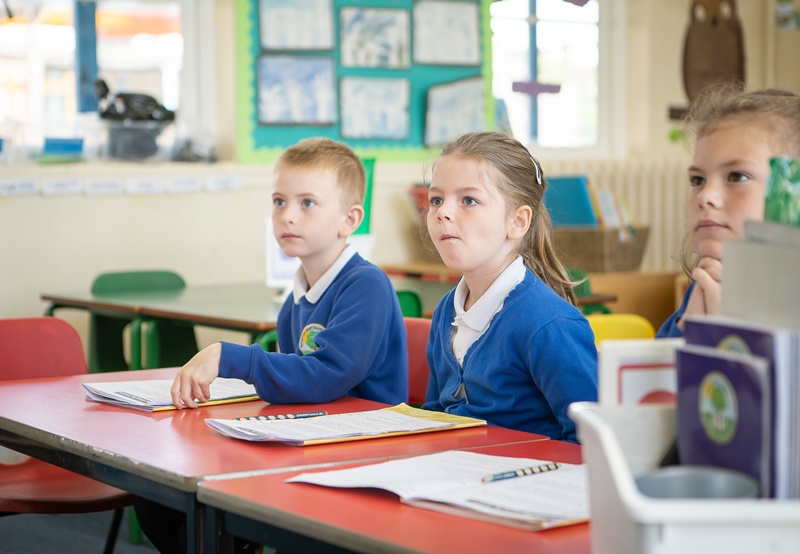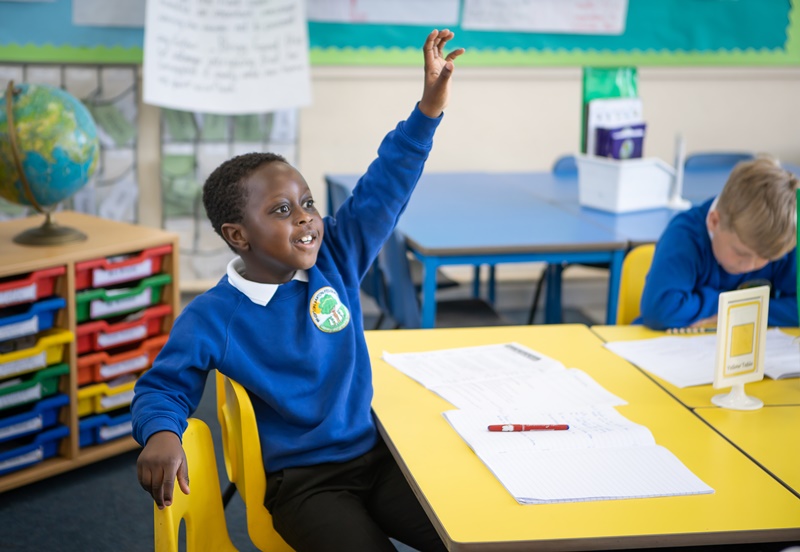Maths
At Whipton Barton Federation, our aim is to deepen children's understanding of Maths and not accelerate through learning; as a result, our children develop fluency before moving onto reasoning and problem solving. Our teaching is richly supported by the use of pictorial and concrete resources throughout all year groups, before moving to the abstract. Children will draw on all three of aspects throughout their time in primary school. We value the microscopic gains pupils make in Maths and, therefore believe offering opportunities for all pupils to deliberately practise their fluency is vitally important and this is a key feature of every one of our lessons.
Throughout each year, children will cover and build on their understanding in: knowing and using numbers, addition and subtraction, multiplication and division, using fractions, understanding the properties of shape, describing position, direction and movement, using measures, using statistics and using algebra.


Once they have a firm grasp of each mathematical technique, we challenge our pupils to use what they have learnt and to make rich connections across the distinct areas in order to solve problems. We believe it is important for children to be able not only to find the answers to problems but also to be able to explain the reasoning behind their lines of enquiry using accurate mathematical vocabulary. Children will be regularly told ‘the answer is just the beginning’! By celebrating learning and through engaging challenges, we inspire our pupils to increase their fluency in maths and to become increasingly sophisticated problem solvers, both in Maths and across the curriculum.
Teachers plan professionally sculpted lessons according to the needs of each class.
Throughout their time at Whipton Barton Federation, our pupils learn the following essential characteristics of mathematics:
- An understanding of the important concepts and an ability to make connections within mathematics;
- A broad range of skills in using and applying mathematics;
- Fluent knowledge and recall of number facts and the number system;
- The ability to show initiative in solving problems in a wide range of contexts, including the new or unusual;
- The ability to think independently and to persevere when faced with challenges;
- To embrace the value of learning from mistakes and false starts;
- The ability to reason, generalise and make sense of solutions;
- Fluency in performing written and mental calculations and mathematical techniques;
- A wide range of mathematical vocabulary; A commitment to and enthusiasm in the subject.
Broadly the children will learn the following in each year group:
Year 1 - children will explore numbers to 100, identifying and representing those using objects and pictorial representations. Children will look at basic fractions, shapes and measurements, applying their new knowledge to the world around them.
Year 2 - children will use place value and number facts to solve problems using addition and subtraction, recall and use multiplication and division facts, recognise a variety of fractions and shapes and use measurement.
Year 3 - children will count in varying difficulties of multiples, fractions, develop their time telling, use Roman Numerals and interpret data using varying charts.
Year 4 - children will solve number and practical problems, use formal addition and subtraction methods, solve multiplication problems, continue working on fraction knowledge, convert between units of measurement, classify geometric shapes and look at translation of shapes.
Year 5 - work with numbers to at least 1,000,000, use the formal method with increasingly formal written methods, use rounding to check answers, identify prime and square numbers, compare and order fractions, convert between measurements, identify and problem solve with missing angles and interpret information in tables.
Year 6 - use rounding to compare numbers, determine the value of digits up to 8 digits, use wider knowledge to solve fraction problems, use formal multiplication methods, solve problems involving relative size, ratio and proportion, calculate missing numbers, master properties of shapes, describe positions on the full coordinate grid and interpret and construct pie charts and line graphs.
Parents/Carers can find out more about what area of Maths that their child is learning about weekly on the Home Learning letter.
